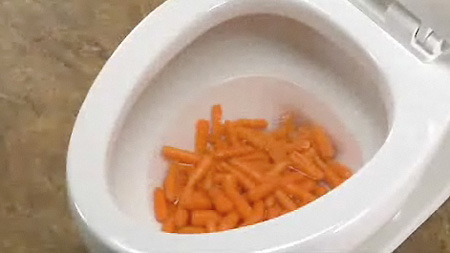Are You Allowed to Dispose of Food Down the Toilet?
Are You Allowed to Dispose of Food Down the Toilet?
Blog Article
Right here on the next paragraphs you can locate some high-quality advice about Flushing Food Down the Toilet?.

Introduction
Many people are typically faced with the problem of what to do with food waste, particularly when it concerns leftovers or scraps. One common inquiry that emerges is whether it's fine to flush food down the bathroom. In this short article, we'll look into the reasons people might think about purging food, the effects of doing so, and alternative methods for proper disposal.
Reasons people could take into consideration purging food
Absence of awareness
Some people may not be aware of the potential harm triggered by purging food down the bathroom. They might incorrectly believe that it's a harmless practice.
Comfort
Flushing food down the toilet may feel like a quick and easy remedy to taking care of undesirable scraps, particularly when there's no neighboring garbage can available.
Idleness
In some cases, people may simply choose to flush food out of large laziness, without considering the consequences of their actions.
Consequences of flushing food down the commode
Environmental influence
Food waste that ends up in rivers can add to contamination and harm water ecological communities. Additionally, the water utilized to flush food can strain water sources.
Plumbing concerns
Flushing food can cause blocked pipelines and drains, creating costly plumbing repairs and inconveniences.
Kinds of food that must not be flushed
Fibrous foods
Foods with coarse textures such as celery or corn husks can get entangled in pipelines and create blockages.
Starchy foods
Starchy foods like pasta and rice can absorb water and swell, leading to clogs in pipes.
Oils and fats
Greasy foods like bacon or food preparation oils must never be flushed down the bathroom as they can strengthen and create blockages.
Proper disposal approaches for food waste
Utilizing a waste disposal unit
For homes geared up with waste disposal unit, food scraps can be ground up and flushed through the plumbing system. Nevertheless, not all foods appropriate for disposal in this fashion.
Recycling
Specific food product packaging products can be reused, decreasing waste and decreasing environmental impact.
Composting
Composting is an eco-friendly way to dispose of food waste. Organic materials can be composted and used to enhance soil for gardening.
The significance of proper waste administration
Reducing ecological harm
Appropriate waste monitoring techniques, such as composting and recycling, aid decrease pollution and maintain natural deposits for future generations.
Shielding plumbing systems
By staying clear of the practice of flushing food down the commode, homeowners can prevent costly plumbing fixings and maintain the integrity of their pipes systems.
Verdict
In conclusion, while it might be appealing to flush food down the bathroom for convenience, it is essential to understand the potential repercussions of this action. By embracing proper waste management techniques and disposing of food waste responsibly, individuals can add to healthier pipes systems and a cleaner environment for all.
FLUSH FOOD DOWN THE TOILET?
FLUSHING FOOD CAN CAUSE BLOCKED DRAINS IN YOUR HOME
All of the plumbing fixtures in your home are connected to the same sewer pipe outside of your home. This outdoor sewer pipe is responsible for transporting all the wastewater from your home to the Council sewer mains. Even small pieces of food that go down the kitchen sink can cause problems for your sewer. It should therefore be obvious that flushing larger bits of food, such as meat, risks a clog in either the toilet itself or the sewer pipes. Flushing greasy food is even more problematic because oil coagulates when it cools, coating the interior lining of your pipes.
THE TOILET IS NOT A BIN
Food isn’t the only thing that people shouldn’t be flushing down the toilet. People use the toilet to dispose of all kinds of things such as tampons, makeup wipes, dental floss, kitty litter and even underwear. Water goes to great lengths to educate residents about the high costs and stress placed on wastewater treatment systems simply from people flushing the wrong stuff down the toilet. It costs taxpayers millions of dollars each year, and homeowners thousands in blocked drain repairs.
FLUSHING FOOD IS A WASTE OF WATER
Flushing food is a waste of our most precious resource - water. In June this year Level 1 water restrictions were introduced to protect water supply from drought conditions. Much of New South Wales continues to be affected by prolonged drought with recent figures revealing up to 97 per cent of the state remains in drought. Depending on whether you have a single or dual flush toilet, every single flush uses between five and 11 litres of water. In the current climate this is a huge amount of water to be wasting on flushing food that should be placed in the bin (or better yet, the compost).
https://www.jabplumbingsolutions.com.au/blog/can-you-flush-food-down-the-toilet

I hope you enjoyed our piece on . Thanks a ton for taking time to read through our content. Make sure you set aside a second to distribute this blog if you appreciated it. Many thanks for being here. Revisit us soon.
Call Today Report this page